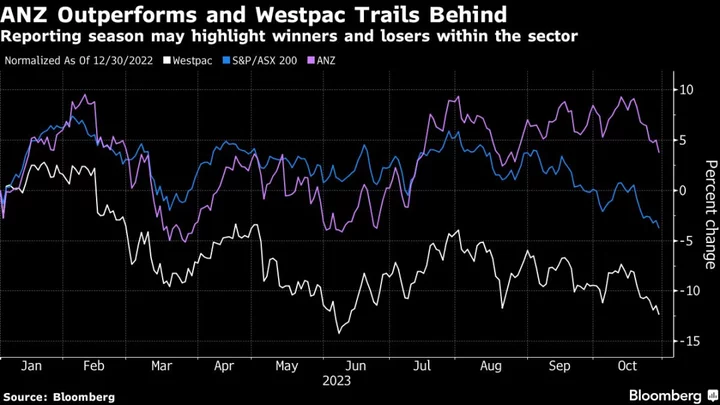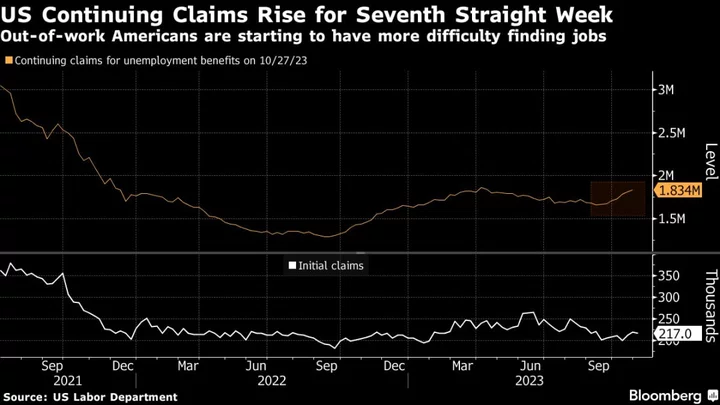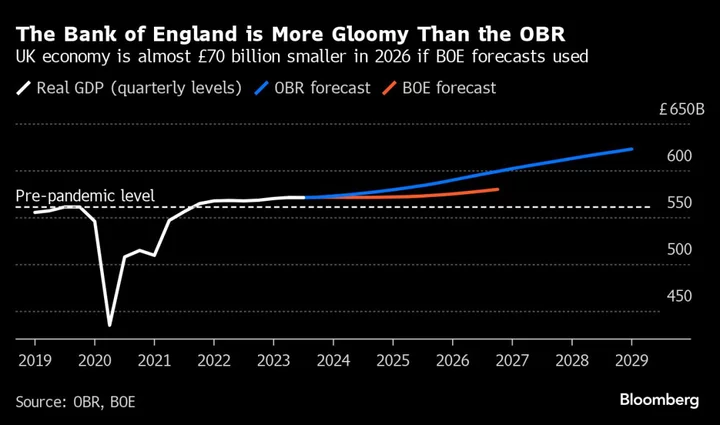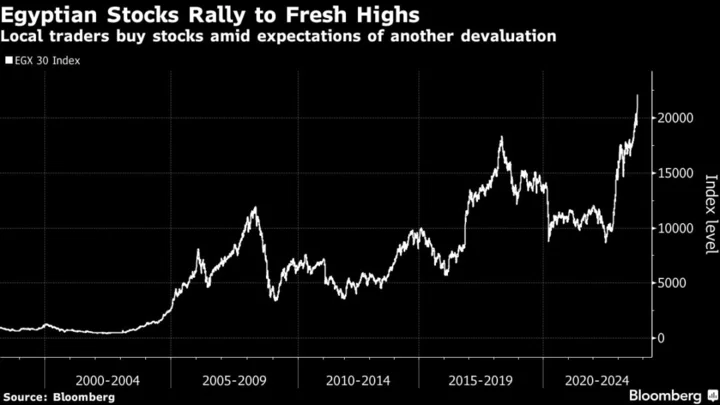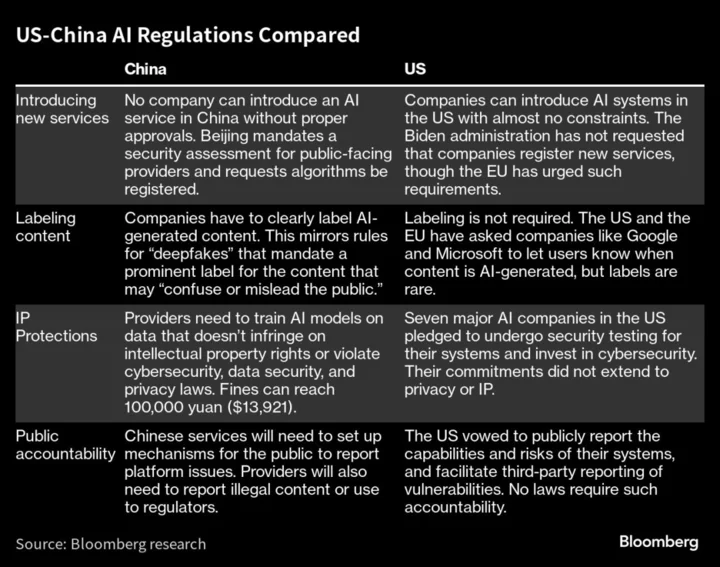Rising costs and intensifying competition for home loans at Australia’s biggest banks are combining to set up a grueling earnings season over the next two weeks.
With less of a tailwind from rising interest rates, bank investors are now focusing on how far net interest margins — a key gauge of profitability — can fall. Analysts are watching to see if Westpac Banking Corp., the first of the nation’s big four lenders to give results, can claw back its recent stock price underperformance.
“Expecting banks to report on the weak side given the competitive intensity we are still seeing,” said Matthew Haupt, fund manager at Wilson Asset Management in Sydney. “A mix of funding cost increases and operating expenses is likely to see them report on the softer side than expectations,” he said.
One area that could provide a positive surprise are bank provisions for bad debt charges. With an economy that’s showing no signs of an upcoming surge in the unemployment rate, some analysts expect this economic resiliency will mean these buffers can be reduced.
ANZ Group Holdings Ltd. is the only major bank to outperform the S&P/ASX 200 Index this year. Westpac shares are down 9%, while National Australia Bank Ltd., Commonwealth Bank of Australia and Macquarie Group Ltd. are also posting losses. Macquarie is expected to report soft first-half earnings Friday as weakness in its commodities and global markets business combines with fewer asset sales.
Here are the key factors to watch:
Cost Pressures
Banks are seeing higher funding costs and increasing wage expenses as elevated inflation persists in Australia. Market pricing shows the Reserve Bank of Australia will hike interest rates again next week.
“With funding costs escalating and the increased likelihood of a ‘higher for longer’ rates story,” that will slow high volumes and net interest margin expansion trends, according to UBS Group AG analysts led by John Storey.
Read more: Australia’s Hotter-Than-Expected Inflation Puts Hike in Play
Bad Debts
As banks sit on buffers that exceed the requirements of regulators, there’s the potential for expectations of those provisions to be cut if the economy holds up.
“The resiliency of the economy is likely going to push the auditors to challenge management teams over just how realistic those forecasts are, and whether the banks need to sit provisions so far above current loan loss expectations,” Citigroup Inc. analysts led by Brendan Sproules wrote in a note.
Market Volatility
Investors are already expecting weakness from Macquarie’s results after the investment bank warned its on course for a tough period. That’s largely due to reduced profitability in its global markets business and fewer asset sales. JPMorgan analysts anticipate return-on-equity of about 11% for the first half, the lowest since the Covid-impacted first half of 2021.
Intense Competition
Mortgage competition remained fierce as consumers rolled off fixed-rate loans from the pandemic and jumped on to new floating-rate products with much higher rates. Commonwealth Bank may need to address how much further it can give away market share in its biggest business to rivals. Net interest margins, the gap between money made on loans and what’s paid on deposits, is seen softening into next year.
“It is highly anticipated to see from the upcoming earnings that the margin headwind has begun to blow unevenly across the sector, which entails two key watch points: who is leading the way to move past the peak of the net interest margin curve, and who is winning the cash game to stock up for the rainy days ahead,” said Hebe Chen, an analyst at IG Markets in Melbourne.
Key Dates
Macquarie — Nov. 3
Westpac — Nov. 6
NAB — Nov. 9
ANZ — Nov. 13
Commonwealth Bank — Nov. 14
--With assistance from Swati Pandey.
(Updates share moves and adds details on Macquarie earnings in fifth paragraph)

